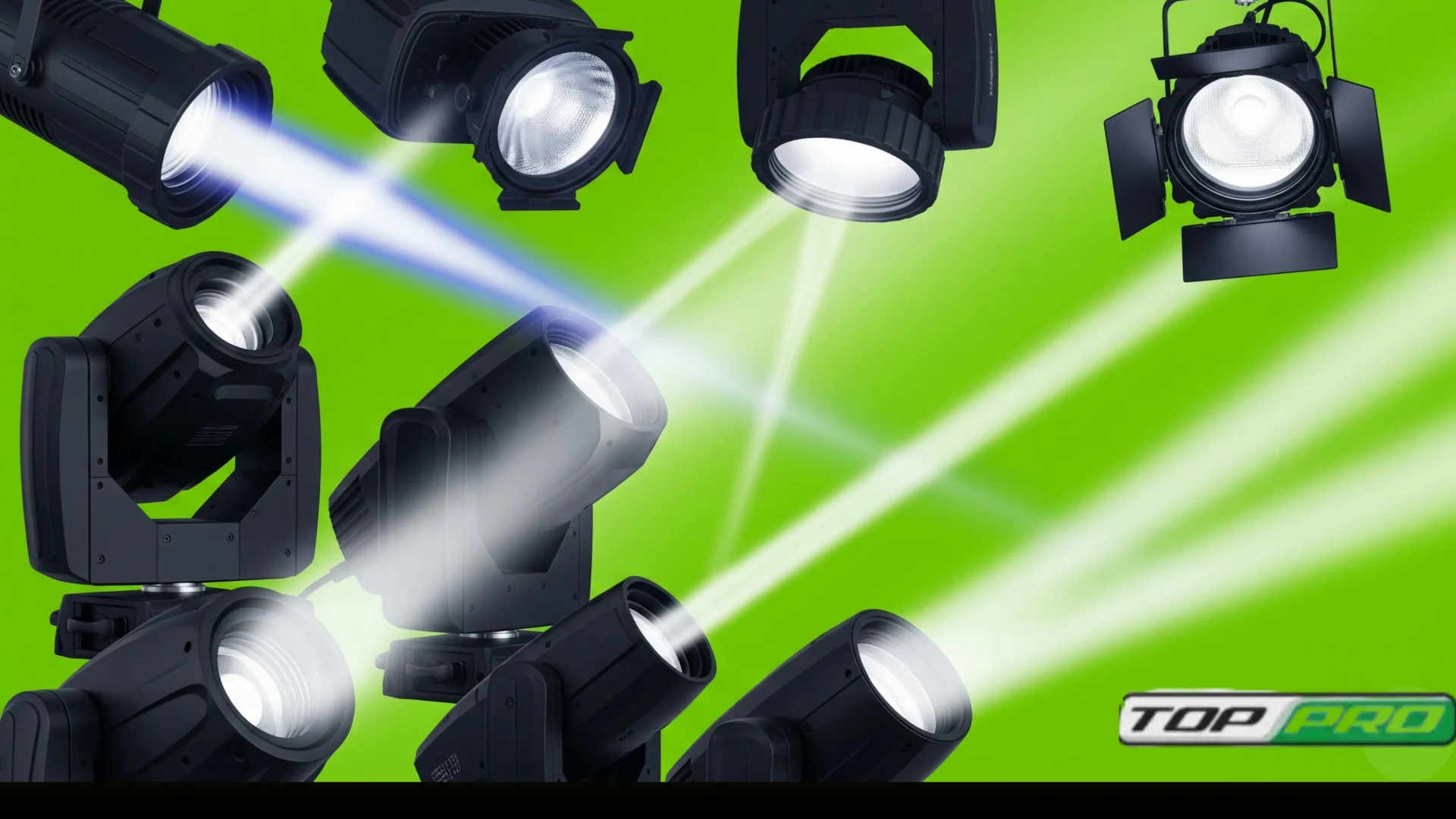What’s the Ideal Beam Angle for Different Stage Sizes?

For Small stages (10-20 feet) work best with 25-40 degree beam angles, medium stages (20-40 feet) need mixed 15-60 degree approaches, while large venues (40+ feet) require layered lighting from narrow 10-15 degree spots to broad 60-80 degree washes. The key is matching your beam width to your coverage area—too narrow creates gaps, too broad loses focus and wastes energy.
Stage lighting can make or break any performance, whether you’re illuminating a cozy coffee shop acoustic set or a grand theatre production. The secret weapon that separates amateur lighting from professional-grade illumination? Beam angle selection.
That’s why understanding beam angles isn’t just technical knowledge—it’s the foundation of creating memorable experiences for both performers and audiences. We’ve worked with countless venues across Dubai and beyond, helping them transform their lighting setups from mediocre to magnificent. Let’s dive into the basics of beam angle that will elevate your stage lighting game!
Understanding Beam Angles
Beam angle refers to the width of light spread from your fixture, measured in degrees. Think of it like a flashlight—narrow beam angles create focused spotlights (10-30 degrees), while wide beam angles provide broad coverage (40-120 degrees).
The difference is dramatic in real-world applications. A narrow 15-degree beam creates that classic spotlight effect, perfect for isolating a lead vocalist during a power ballad. Meanwhile, a wide 60-degree beam washes entire stage sections in even light, ideal for ensemble scenes or background illumination.
Why does this matter? Proper beam angle selection ensures every performer is visible, eliminates harsh shadows, and creates the mood your production demands. Too narrow, and you’ll have bright spots with dark gaps. Too wide, and you’ll lose the dramatic focus that makes performances captivating.
Beam Angles by Stage Size
Small Venues (10-20 feet wide):
For intimate coffee shops, small clubs, or conference rooms, 25-40 degree beam angles work beautifully. These provide sufficient coverage without overwhelming the space. A single 30-degree LED par can effectively light a solo performer, while two to three fixtures create dynamic coverage for small bands.
Medium Stages (20-40 feet wide):
Theatre stages and mid-sized venues benefit from mixed beam approaches. Use 15-25 degree spots for key lighting on performers, combined with 40-60 degree wash lights for background coverage. This combination creates depth and professional-looking illumination that adapts to different scenes.
Large Venues (40+ feet wide):
Concert halls and major theatres require strategic beam planning. Narrow 10-15 degree beams are suitable for long-distance key lighting, while 60-80 degree fixtures offer broad wash coverage. The key is layering—multiple beam angles working together to eliminate shadows and create even coverage across expansive stages.

Best Stage Lighting Options
LED Par Lights remain the workhorses of stage lighting, offering adjustable beam angles ranging from 15 to 60 degrees in single fixtures. Models like the Toppro Par Light offer excellent colour mixing with variable beam control, making them perfect for venues that require flexibility.
Moving Head Spotlights excel in larger venues, offering motorized beam angle adjustment from tight 8-degree spots to broad 40-degree washes. The TopPro Moving Head delivers professional-grade beam control that adapts instantly to different songs or scenes.
Fresnel Lights provide the smoothest beam edges for theatre applications, with adjustable angles ranging from 12 to 70 degrees, depending on the model.
Pro Tips for Perfect Lighting
Layer your lighting approach—combine narrow spots for key performers with broad washes for ambient coverage. Test the stage area before showtime by walking the entire area to identify any shadows or hot spots. Consider audience perspective—what looks good from the lighting booth might create glare for front-row viewers.
Energy efficiency matters too—LED fixtures with precise beam control reduce wasted light and lower power consumption compared to traditional, broad-beam incandescent fixtures.
Get Professional Results at Topprosound!
Ready to transform your stage lighting? Our expert Sales Engineers understand the technical details AND the creative vision behind great lighting design. Whether you need beam angle calculations for your specific venue or product recommendations that fit your budget, we’re here to help you create unforgettable performances.
Contact our knowledgeable team at +971 58 928 1994 for personalized lighting solutions that will make your stage shine!







